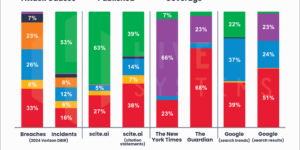The U.S. Agency for International Development and the Rockefeller Foundation are starting a $100 million project to prepare vulnerable communities for climate-caused humanitarian disasters before they happen.
The initiative, which will start in Africa’s Sahel region and was announced Monday at the U.S.-Africa Leaders Summit in Washington, is aimed at the droughts, typhoons and wildfires that devastate vulnerable communities around the world.
The humanitarian concerns have national-security implications, according to USAID Administrator Raj Shah. In the Sahel, the constant struggle for survival can destabilize countries and enhance the appeal of extremist groups with a transnational reach, such as Boko Haram.
“The intersecting problems of extreme climate, extreme ideology and extreme poverty in certain parts of the world are just going to further intensify the risk of humanitarian crisis after humanitarian crisis after humanitarian crisis,” Shah said in an interview. “This is a common challenge to our economic prosperity, national security and economic security.”
In a world where global climate change is projected to lead to more extreme weather events, the New York-based Rockefeller Foundation and USAID are contributing $50 million each over five years to help develop ways to help countries better withstand disasters instead of constantly being knocked down and struggling to recover.
Solvable Problems
“We’ve come to the view that all of these recurring problems are solvable problems,” Rodin said in a telephone interview. “We can stop destruction from becoming disaster. We think the partnership itself can produce a paradigm shift.”
The $100 million will concentrate first on a “Resilience Challenge” that will begin next month by asking specialists, academics, companies and others to develop ideas that help communities withstand sudden shocks and longer-term stresses.
Winners will be awarded grants to implement their ideas in the three regions the project will focus on—the Sahel, the Horn of Africa and Southeast Asia. The contest also will help the organizers identify innovators and ideas, whether or not they win, Rodin said.
The initiative also will focus on developing data that can be used for predictive analytics, such as technologies to map water levels, and making them more accessible to governments so the data can be used to save lives and build communities.
Risk Insurance
A final area will be finding new streams of financing to help build resilience, including bonds and expanded risk insurance.
As part of the effort, USAID and Rockefeller have been discussing the prospect of insurance products for very poor households with insurance companies Swiss Re Ltd. and Willis Group Holdings Plc, Shah said.
Rodin says farmers too poor to pay an insurance premium could earn it by working on community resilience projects, such as shoring up mangrove forests or building new water-storage facilities.
The Rockefeller Foundation has emphasized the concept of “resilience” working in New Orleans after Hurricane Katrina in 2005, on the U.S. East Coast after Super Storm Sandy in 2012, and with Asian cities to develop strategies to deal with weather events.
Resilience-Related Projects
In the last decade, Rockefeller has spent about $500 million on resilience-related projects in the U.S. and overseas. In the past 30 years, Rodin said, one of every three dollars spent on development was lost when recurring crises hit, costing the world a total $3.8 trillion.
U.S. data show that the government spends an average of about $6 billion a year addressing humanitarian crises, “and year after year, 90 percent of that spending goes to the same people, in the same countries, in the same crises,” Shah said.
The disaster patterns are visible in headlines: Haiti has its earthquakes; Southeast Asia is hit by tsunamis and typhoons; the Sahel and the Horn of Africa wither every time the rain stops. In 2011 and 2012, drought killed more than 30 million people across the Sahel and the Horn and inspired the project to build greater resilience.
“In the last 30 years the number of weather-related disasters have tripled; the costs have gone up 300 percent—$200 billion every year; and the climate change is just predicted to increase dramatically,” Rodin said. “We believe this has to stop, that we need to invest in resilience building.”
Shah called the $100 million fund an “initial investment in what we hope, over time, is a shift of billions of dollars from dealing with disasters after the fact, to building better communities up front to avoid disasters to begin with.”




















 Slideshow: Carrier Management’s 2024 Top Editor’s Picks (Unlocked)
Slideshow: Carrier Management’s 2024 Top Editor’s Picks (Unlocked)  Dear Elon and Vivek: Insurance Commissioners Urge DOGE to Ditch FIO
Dear Elon and Vivek: Insurance Commissioners Urge DOGE to Ditch FIO  Insurance Carrier Employees Are Bored; Most Boring Rankings Published
Insurance Carrier Employees Are Bored; Most Boring Rankings Published  Most Distracting Holiday Songs for Drivers Ranked
Most Distracting Holiday Songs for Drivers Ranked 
